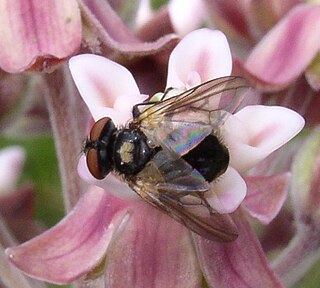Gymnophryxe is a genus of flies in the family Tachinidae.
Ametadoria is a genus of flies in the family Tachinidae.
Belida is a genus of flies in the family Tachinidae.

Blepharomyia is a genus of flies in the family Tachinidae.

Cryptomeigenia is a genus of parasitic flies in the family Tachinidae. Larvae are parasitoids of adult scarab beetles.
Euthera is a genus of flies in the family Tachinidae.
Gaediopsis is a genus of flies in the family Tachinidae.

Nilea is a genus of flies in the family Tachinidae.

Oswaldia is a genus of flies in the family Tachinidae.

Platymya is a genus of flies in the family Tachinidae.
Steleoneura is a genus of tachinid flies in the family Tachinidae.
Angustia is a genus of flies in the family Tachinidae.
Bessa is a genus of flies in the family Tachinidae.
Prooppia is a genus of parasitic flies in the family Tachinidae.
Eribella is a genus of flies in the family Tachinidae.
Gueriniopsis is a genus of flies in the family Tachinidae.

Phasiini is a tribe of flies in the family Tachinidae. As a result of phylogenetic research, most members of this tribe were transferred to other tribes in the subfamily, leaving only the two genera Elomya and Phasia.

Phasia obesa is a species of 'parasitic flies' belonging to the family Tachinidae subfamily Phasiinae.
Phasia aldrichii is a tachinid fly found throughout most of North America.

Phasia aurigera is a species of tachinid fly.







